Wednesday, September 3, 2008
Hazard symbols are easily recognizable symbols designed to warn about hazardous materials or locations. The use of hazard symbols is often regulated by law and directed by standards organizations. Hazard symbols may appear with different colors, backgrounds, borders and supplemental information in order to signify the type of hazard.
Common hazard symbols
| Name | Symbol | Unicode | Image |
|---|---|---|---|
| Toxic sign | ☠ | U+2620 |  |
| Caution sign | ☡ | U+2621 |  |
| Radiation sign | ☢ | U+2622 |  |
| Ionizing radiation sign | ? | ? |  |
| Non-ionizing radiation sign | ? | ? |  |
| Biohazard sign | ☣ | U+2623 |  |
| Warning sign | ⚠ | U+26A0 |  |
| High voltage sign | ⚡ | U+26A1 |  |
| Chemical weapon symbol (U.S. Army)[1] | N/A | N/A |  |
| Laser hazard sign | ? | ? |  |
| Optical radiation | ? | ? |  |
| |
Radioactive sign


The international radiation symbol (also known as trefoil) first appeared in 1946, at the University of California, Berkeley Radiation Laboratory. At the time, it was rendered as magenta, and was set on a blue background.[2] (See right.) The modern version is reddish-purple against a yellow background, and it is drawn with a central circle of radius R, an internal radius of 1.5R and an external radius of 5R for the blades, which are separated from each other by 60°.[3]

On February 15, 2007, the IAEA and the ISO announced this new ionizing radiation symbol to supplement the traditional trefoil symbol. The new symbol is aimed at alerting anyone, anywhere to the potential dangers of being close to a large source of ionizing radiation.[4] Experts have felt that the trefoil symbol had little intuitive value and was less likely to be recognized by those not educated in its significance. According to the IAEA, in a survey conducted at an international school, many children mistook the trefoil for a non-threatening propeller. Hence, the Agency, along with the International Organization for Standardization has devised this symbol for sealed radiation sources. It depicts, on a red background, a black colored trefoil radiating waves, a skull and crossbones and a person running away from the scene. The radiating trefoil suggests the presence of radiation and the red background, skull and crossbones warn of the danger. More importantly, the person running away from the scene suggests the action of avoiding the labeled material. The symbol had been tested in 11 countries with different population groups, age and educational background to ensure that it clearly conveys the message “Danger- Stay away”. The new symbol is to be displayed prominently on the device that actually houses the radiation sources, so that, even by mistake, if some one attempts to disassemble the device it provides an explicit warning not to proceed any further.[5]
Biohazard sign

According to Charles Baldwin, an environmental-health engineer who contributed to its development:
| “ | We wanted something that was memorable but meaningless, so we could educate people as to what it means. | ” |
Drawing
All parts of the Biohazard sign can be drawn with a compass and straightedge. The basic outline of the symbol is a plain trefoil, which is three circles overlapping each other equally like in a triple venn diagram with the overlapping parts erased. The diameter of the overlapping part is equal to half the radius of the three circles. Then three inner circles are drawn in with 2/3 radius of the original circles so that it's little tangent to the outside three overlapping circles. A tiny circle in center has a diameter 1/2 of the radius of the three inner circle, and arcs are erased at 90°, 210°, 330°. The arcs of the inner circles and the tiny circle are connected by a line. Finally, the ring under is drawn from the distance to the perimeter of the equilateral triangle that forms between the centers of the three intersecting circles. An outer circle of the ring under is drawn and finally enclosed with the arcs from the center of the inner circles with a shorter radius from the inner circles.[3]
Toxic sign

The skull-and-crossbones symbol, consisting of a human skull and two bones crossed together under the skull, is today generally used as a warning of danger, particularly in regard to poisonous substances.
The symbol, or some variation thereof, was also featured on the Jolly Roger, the traditional flag of European and American pirates. It is also used by the Skull and Bones, a secret society at Yale University, and is part of the WHMIS home symbols placed on containers to confirm that the substance inside is dangerous in a way.
In the USA, due to concerns that the skull and bones symbol's association with pirates encourages children to play with toxic materials, the Mr. Yuk symbol is also used to denote poison.

On warning signs, an exclamation mark is often used to draw attention to a warning of danger, hazards and the unexpected. It is normally supplied with a note, as it is a generic term.
Chemical hazard
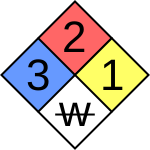

A chemical hazard label is a pictogram applied to containers of dangerous chemical compounds to indicate the specific risk, and thus the required precautions. There are several systems of labels.
The U.S.-based National Fire Protection Association (NFPA) has a standard NFPA 704 using a diamond with four colored sections each with a number indicating severity 0-4 (0 for no hazard, 4 indicates a severe hazard). The red section denotes flammability. The blue section denotes health risks. Yellow represents reactivity (tendency to explode). The white section denotes special hazard information. This label is used primarily in the USA.
In Europe, another standard is used, as fixed in the ADR-Agreement. Vehicles carrying dangerous goods have to be fitted with orange signs, where the lower number identifies the substance, while the upper number is a key for the threat it may pose.
European hazard symbols
These hazard symbols for chemicals are defined in Annex II of Directive 67/548/EEC. A consolidated list with translations into other EU languages can be found in Directive 2001/59/EC (See the links section).
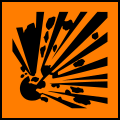 Explosive (E) | 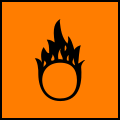 Oxidizing agent (O) | 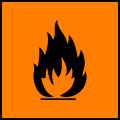 Highly flammable (F) |  Extremely flammable (F+) |
 Toxic (T) | 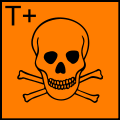 Very toxic (T+) | 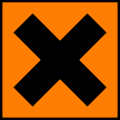 Harmful (Xn) | 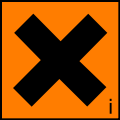 Irritant (Xi) |
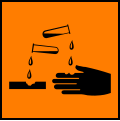 Corrosive (C) | 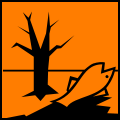 Dangerous for the environment (N) |
1 Comment:
One of the best ways to make sure that your candidate is aware of such symbols or that your employee will be familiar with it is by making sure that they get a good safety training. It could be for 40, 8 or the 24 hour hazwoper program. These are the courses that can teach them about the safety in the workplace and all of the symbols that they will encounter.
Post a Comment